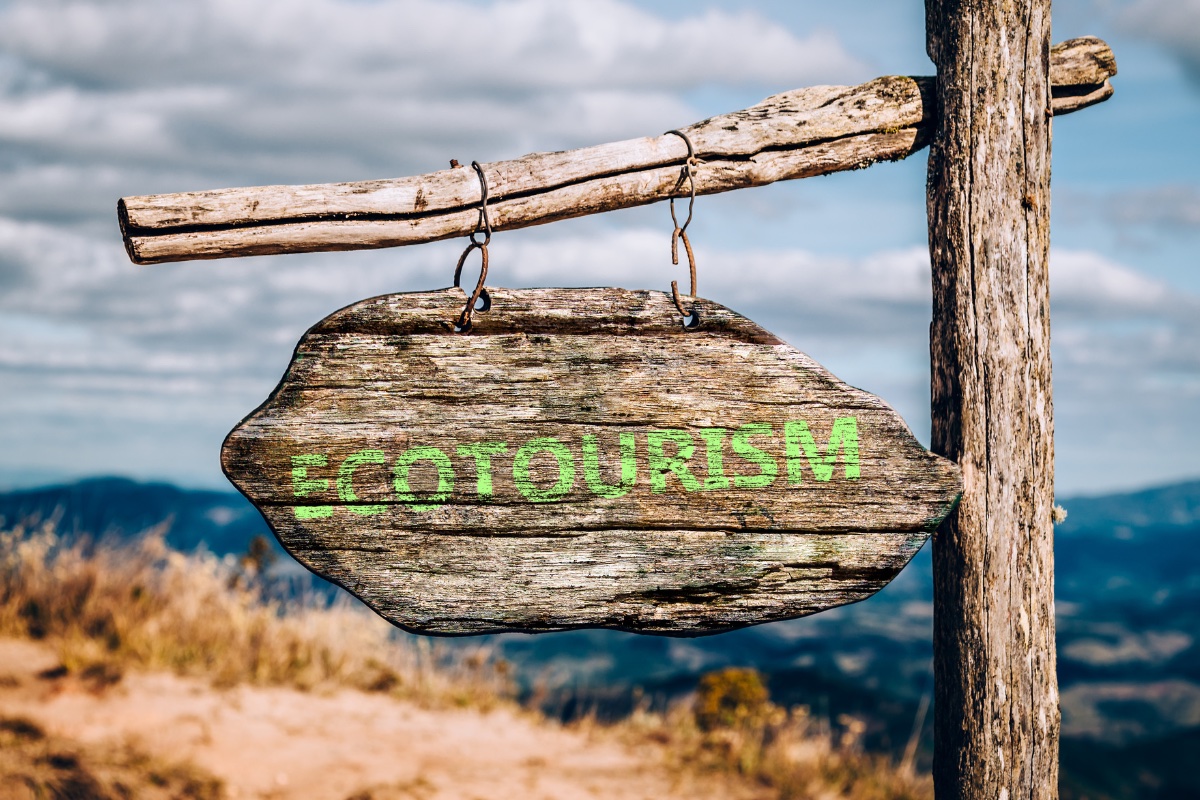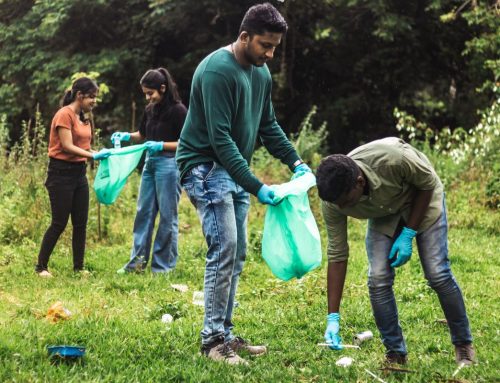What is ecotourism?
Ecotourism, often referred to as sustainable or responsible tourism, is a form of travel that prioritizes environmental conservation, promotes appreciation for nature, and supports local communities. It involves visiting natural areas or destinations while minimizing the negative impact on the environment and fostering a greater understanding of conservation efforts. You can visit our blog for “Zero waste tips for travel“.
Continuedly, we offer to you the best ecotourism places to visit in the United States.
The magic of the Boc’n’Roll
When it comes to ecotourism and sustainable travel practices, considering the products we use during our journeys plays a crucial role. One such innovative and eco-friendly product that aligns well with sustainable travel is the Boc’n’Roll. This versatile and reusable food wrap is a convenient and environmentally conscious alternative to single-use plastic wrap or aluminum foil.
The Boc’n’Roll is designed to reduce waste generated from disposable food packaging while promoting eco-friendly travel habits. It allows travelers and outdoor enthusiasts to carry sandwiches, fruits, snacks, or any food items securely without resorting to single-use plastic bags or wrappers. The Boc’n’Roll is reusable, washable, and easily foldable, making it a practical choice for on-the-go meals during outdoor adventures or travel.
Reducing single-use plastic with us
Its innovative design allows for adjustable sizing, ensuring a snug fit for various food items while also serving as a convenient placemat for mess-free eating. By using the Boc’n’Roll, travelers contribute to reducing single-use plastic waste, supporting sustainable practices, and embracing eco-friendly alternatives in their travel routines.
This eco-conscious food wrap exemplifies a small, yet impactful way individuals can incorporate sustainability into their travel habits, aligning with the ethos of responsible tourism and promoting environmental conservation efforts while exploring the great outdoors.
Key principles of ecotourism include
- Environmental Conservation: Ecotourism aims to conserve natural habitats, protect biodiversity, and minimize human impact on ecosystems. It focuses on preserving fragile environments, wildlife, and natural resources by promoting responsible travel practices.
- Sustainable Practices: Ecotourism embraces sustainability by supporting accommodations, activities, and practices that minimize resource consumption, reduce waste, and utilize renewable energy sources. This includes eco-friendly accommodations, energy-efficient transportation, and responsible waste management.
- Education and Awareness: A core aspect of ecotourism involves educating travelers about the environment, local cultures, and conservation efforts. Through guided tours, interpretive programs, and interactions with local communities, visitors gain a deeper understanding of the importance of environmental conservation and cultural heritage.
- Supporting Local Communities: Ecotourism strives to benefit local economies and communities by providing employment opportunities, supporting local businesses, and respecting indigenous cultures. It often involves engaging with local communities in a mutually beneficial manner, fostering cultural exchange and respect.
- Responsible Visitor Behavior: Travelers practicing ecotourism adhere to guidelines that minimize their impact on the environment and wildlife. This includes respecting wildlife habitats, following designated trails, avoiding littering, and using biodegradable or eco-friendly products.
The perfect combination
Examples of ecotourism activities include wildlife safaris, nature walks, birdwatching tours, snorkeling or diving in marine reserves, and visits to protected areas or national parks. These activities are designed to offer memorable experiences while ensuring the preservation of natural environments and promoting local conservation efforts.
Overall, ecotourism aims to create a balance between experiencing the wonders of nature and cultural heritage while contributing to the conservation and well-being of local communities and ecosystems. It emphasizes the importance of responsible travel practices and ethical considerations, fostering a greater appreciation for the environment and the need to protect it for future generations.
Do ecotourism in United States
The United States offers numerous destinations for ecotourism, each showcasing diverse natural landscapes, wildlife, and conservation efforts. Here are some of the best places for ecotourism in the U.S.:
- Yellowstone National Park, Wyoming, Montana, Idaho: Known for its geothermal features, geysers, hot springs, and diverse wildlife, Yellowstone is the oldest national park in the world. Visitors can explore vast wilderness areas, witness geysers like Old Faithful, observe bison herds, wolves, bears, and enjoy outdoor activities such as hiking, camping, and wildlife viewing.
- Acadia National Park, Maine: Acadia offers a stunning coastal landscape with rocky shorelines, granite peaks, and dense forests. Visitors can hike along scenic trails, kayak among coastal islands, cycle on carriage roads, and appreciate diverse wildlife in a breathtaking setting.
- Olympic National Park, Washington: This park encompasses diverse ecosystems, including temperate rainforests, alpine meadows, and rugged coastline. Visitors can explore ancient forests, hike amidst snow-capped mountains, and enjoy activities like birdwatching, wildlife spotting, and tidepool exploration.
- Great Smoky Mountains National Park, Tennessee, North Carolina: As one of the most biodiverse areas in the country, this park boasts lush forests, cascading waterfalls, and abundant wildlife. Visitors can hike the extensive trail network, go wildlife watching, explore historic sites, and appreciate the park’s natural beauty.
- Everglades National Park, Florida: Known as a unique wetland ecosystem, the Everglades is home to various species of birds, reptiles, and mammals. Visitors can take airboat tours, kayak through mangrove forests, spot alligators, and learn about the importance of wetland conservation.
- Denali National Park, Alaska: Offering spectacular wilderness and breathtaking views, Denali is home to North America’s highest peak, Denali (formerly Mount McKinley). Visitors can experience wildlife viewing, backcountry hiking, mountaineering, and enjoy stunning landscapes of tundra, forests, and glaciers.
- Redwood National and State Parks, California: Known for its iconic giant redwood trees, this park protects old-growth redwoods and diverse ecosystems. Visitors can hike among ancient trees, explore coastal areas, and learn about conservation efforts to protect these majestic forests.
- Glacier National Park, Montana: Known for its glacier-carved peaks and pristine landscapes, Glacier National Park offers stunning alpine scenery, diverse wildlife, and over 700 miles of hiking trails. Visitors can explore pristine lakes, witness glaciers, and experience the park’s natural beauty while supporting conservation efforts.
- Bryce Canyon National Park, Utah: Famous for its unique geological formations known as hoodoos, Bryce Canyon National Park presents an otherworldly landscape of colorful rock pillars. Visitors can hike among the hoodoos, enjoy scenic overlooks, stargaze in designated dark-sky areas, and immerse themselves in the park’s distinct beauty.
- Big Bend National Park, Texas: Situated along the U.S.-Mexico border, Big Bend National Park offers a diverse desert landscape with canyons, rivers, and mountainous terrain. Visitors can explore the Rio Grande River, hike through Chisos Mountains trails, observe diverse wildlife, and marvel at the park’s rugged beauty.










